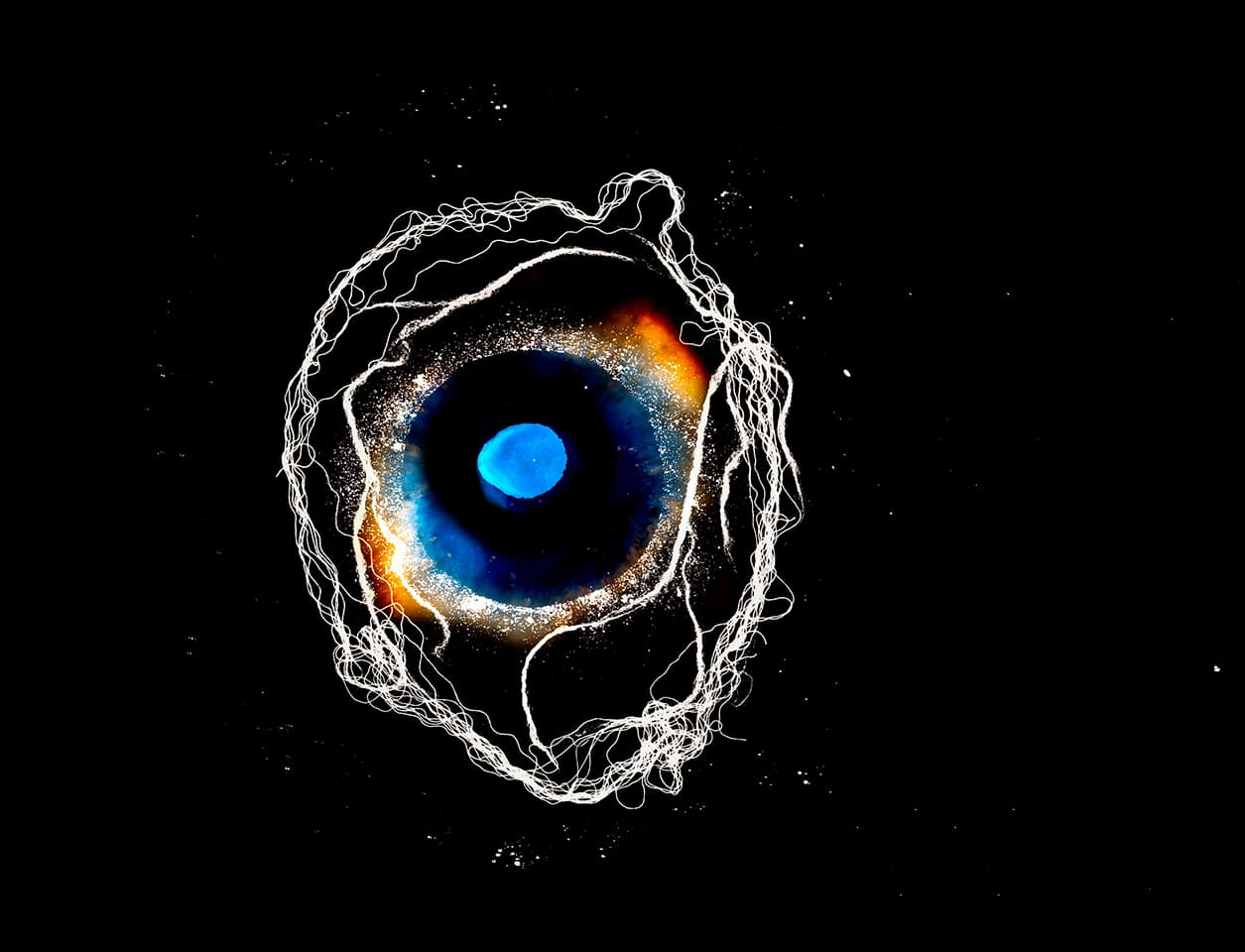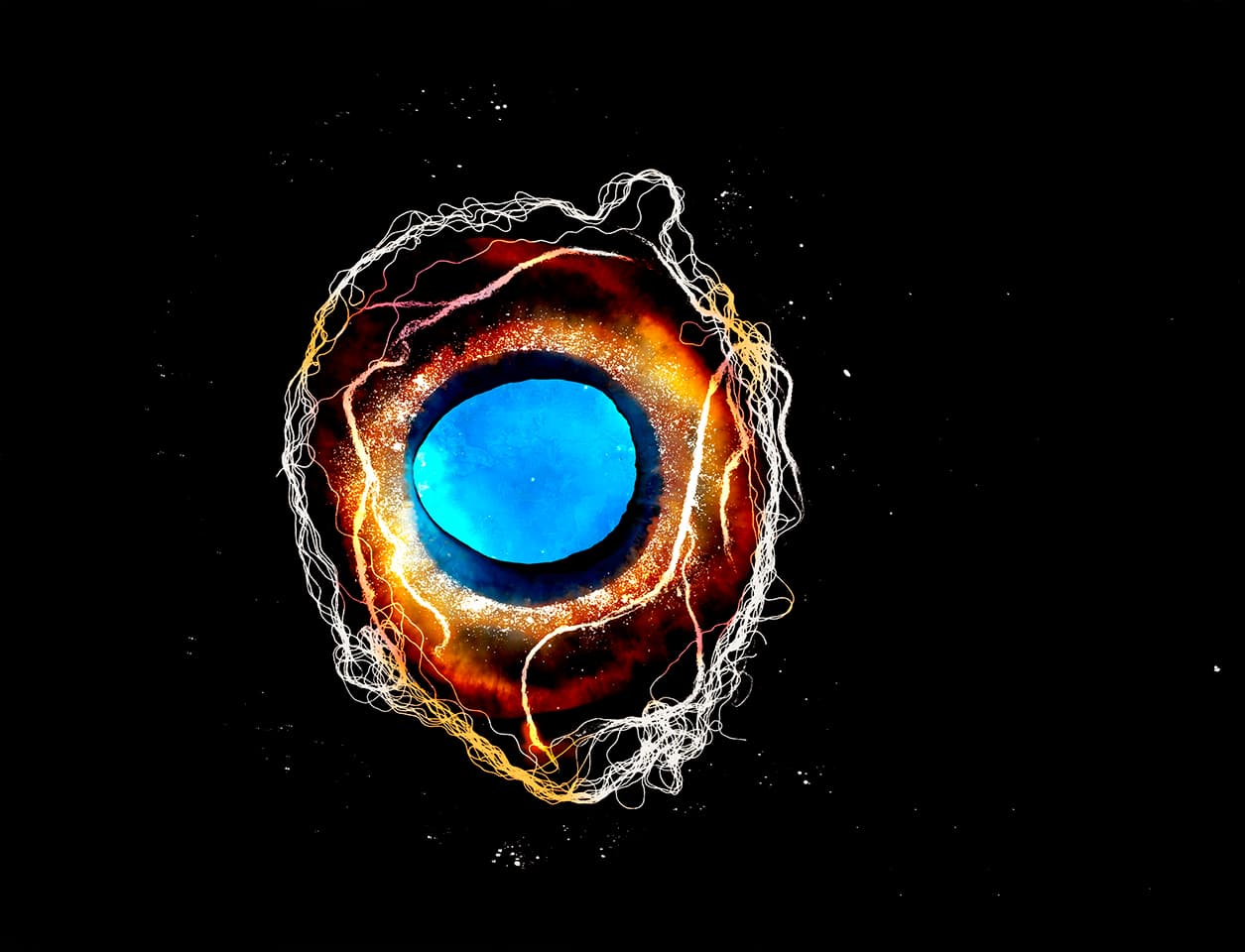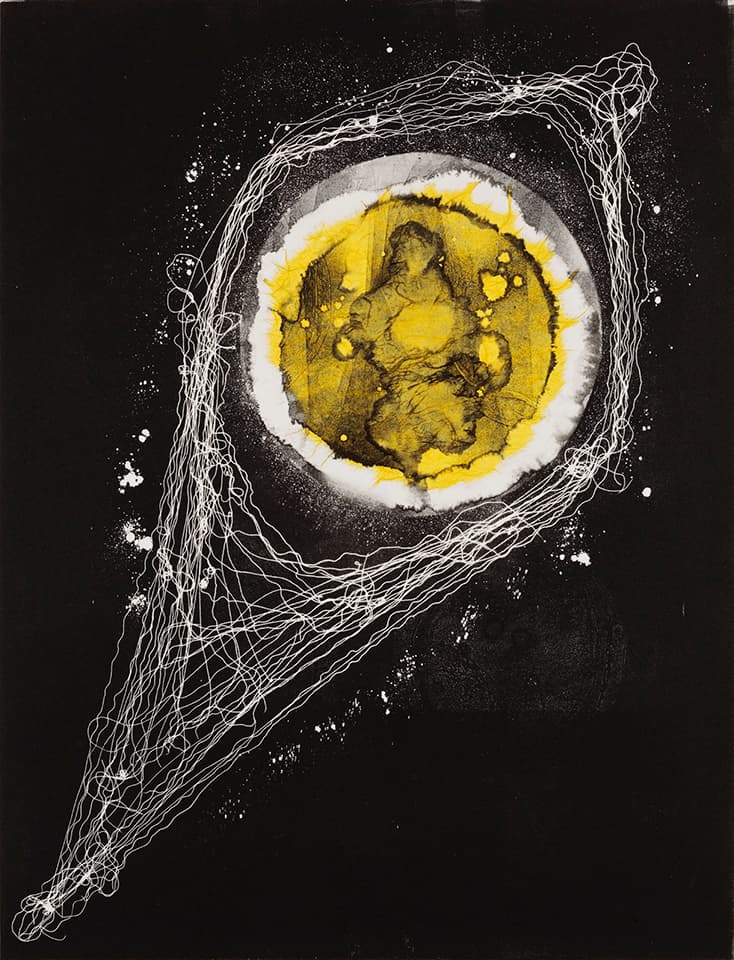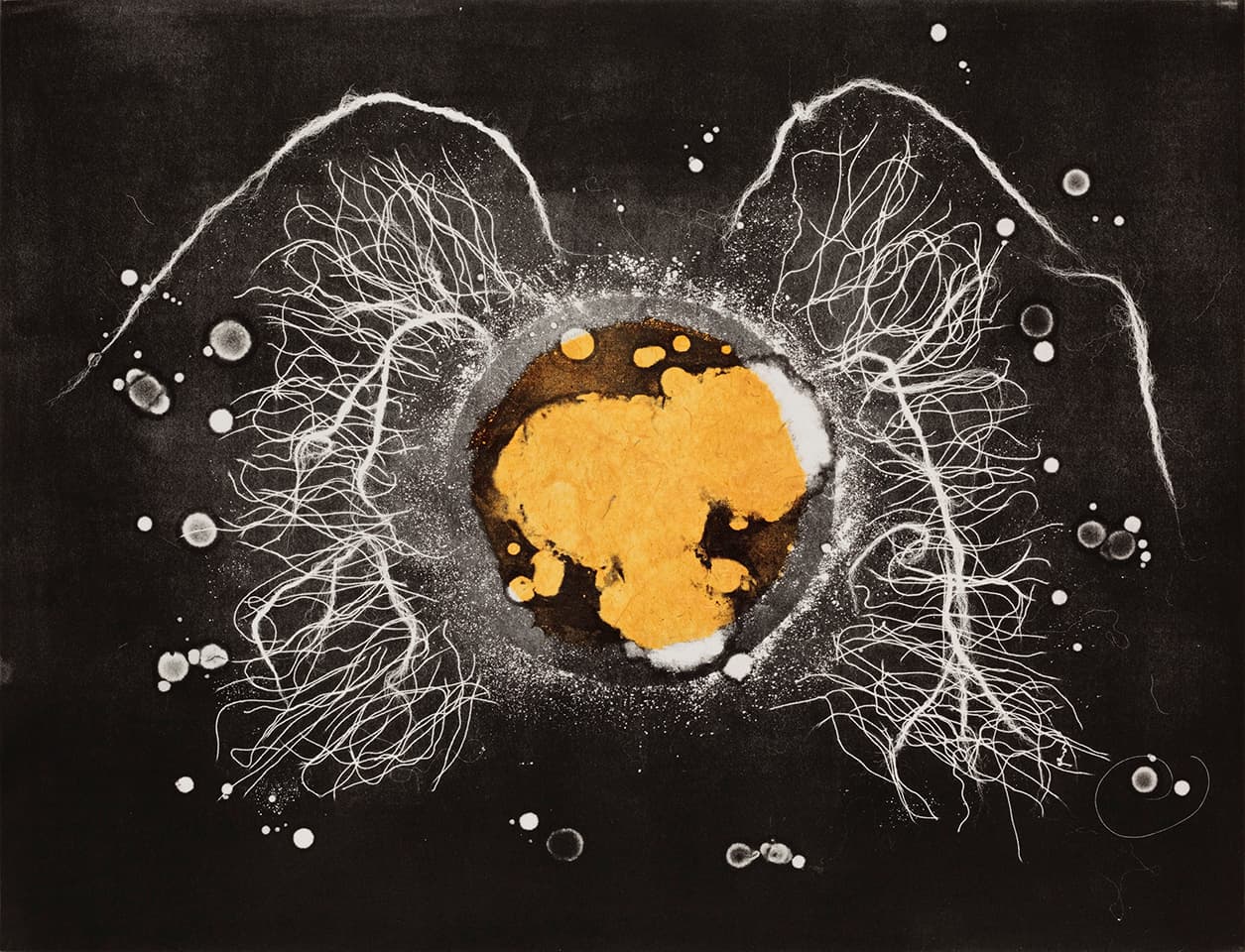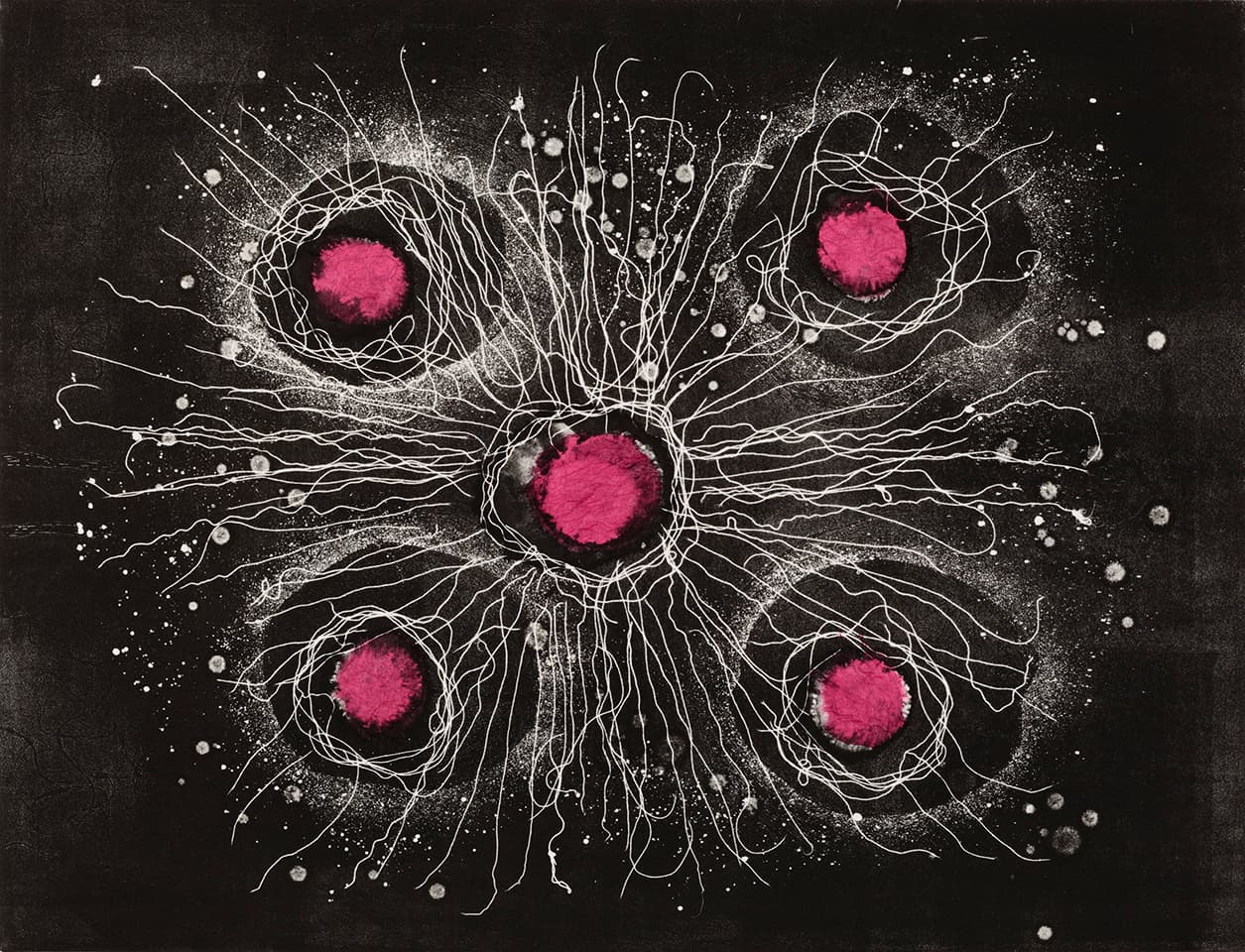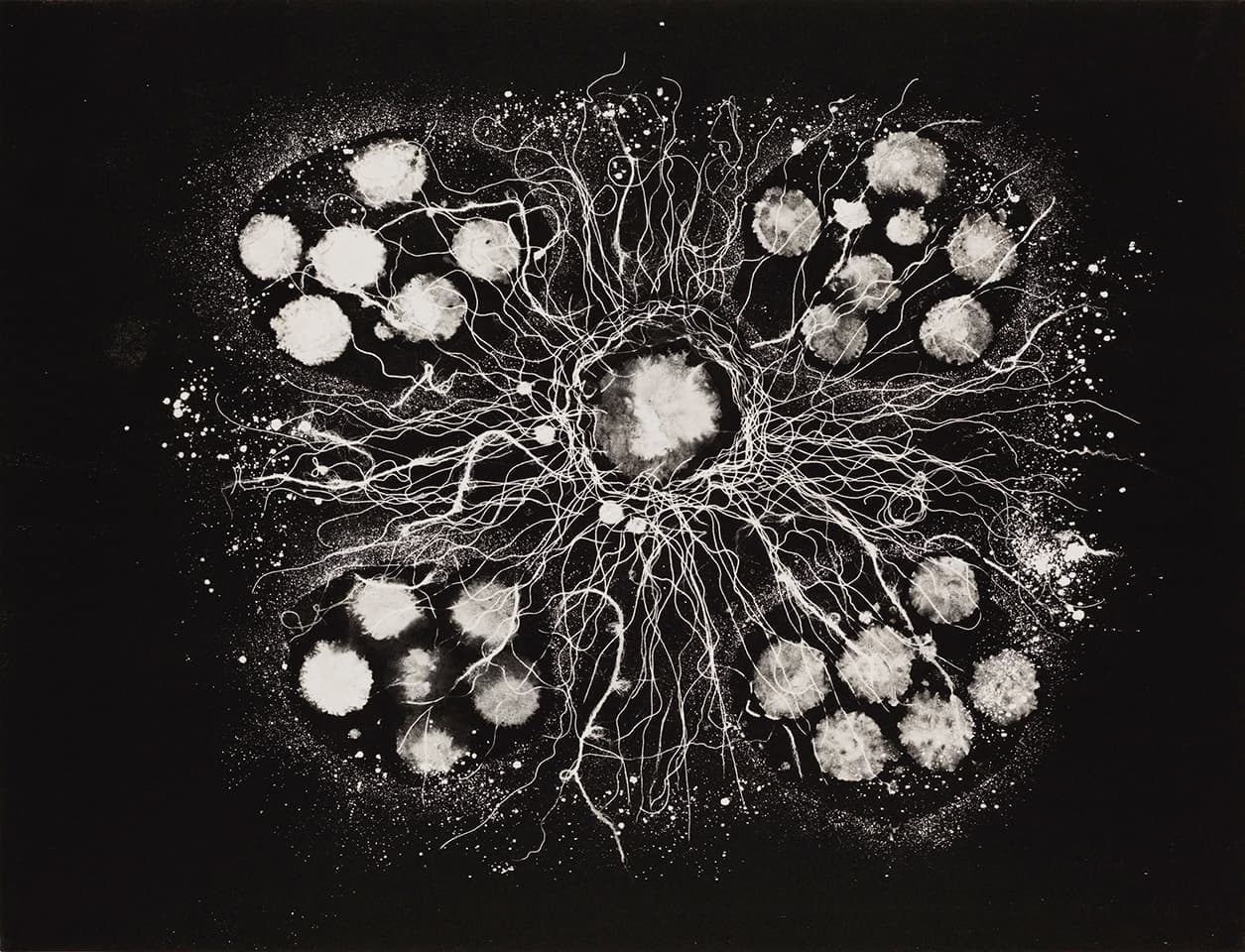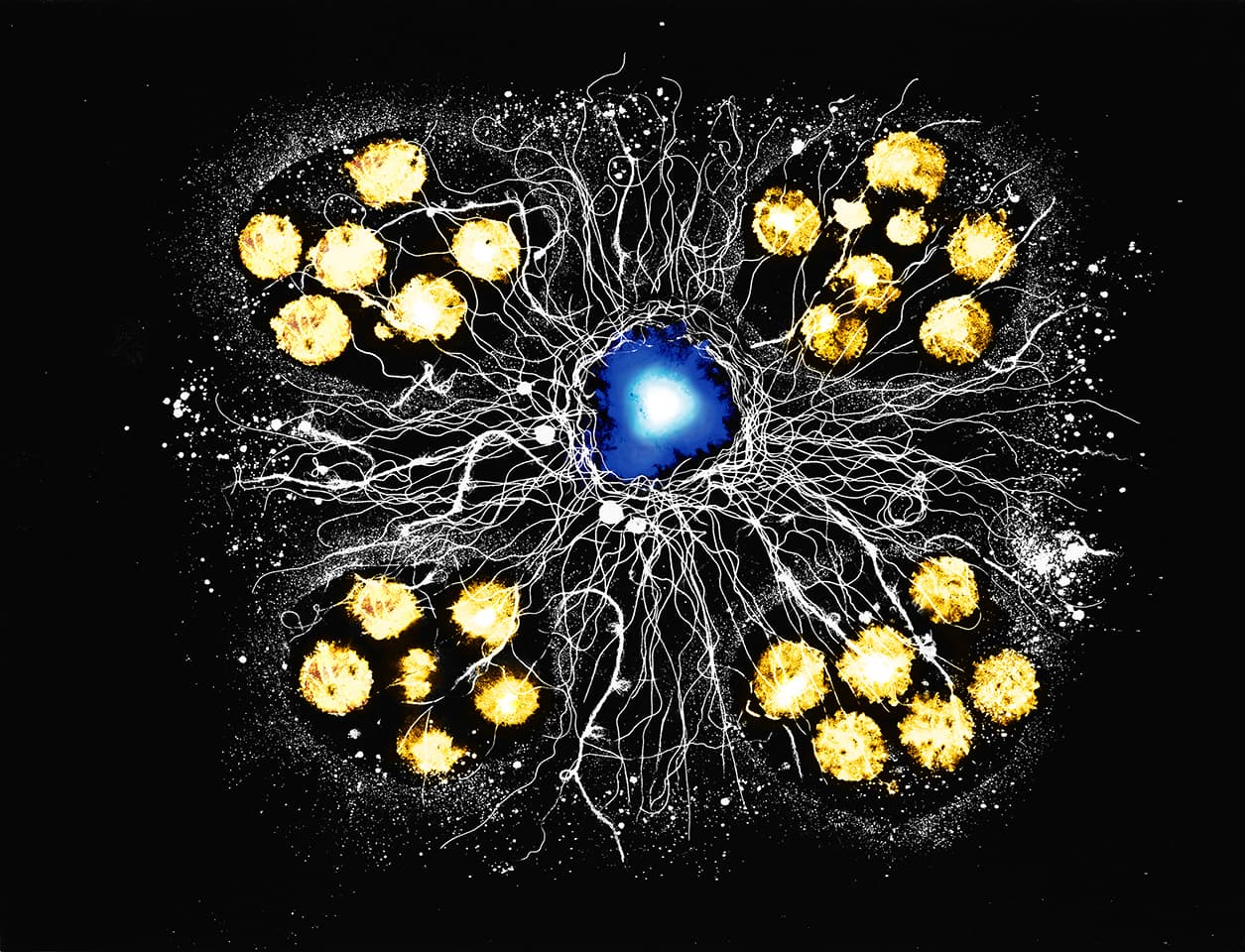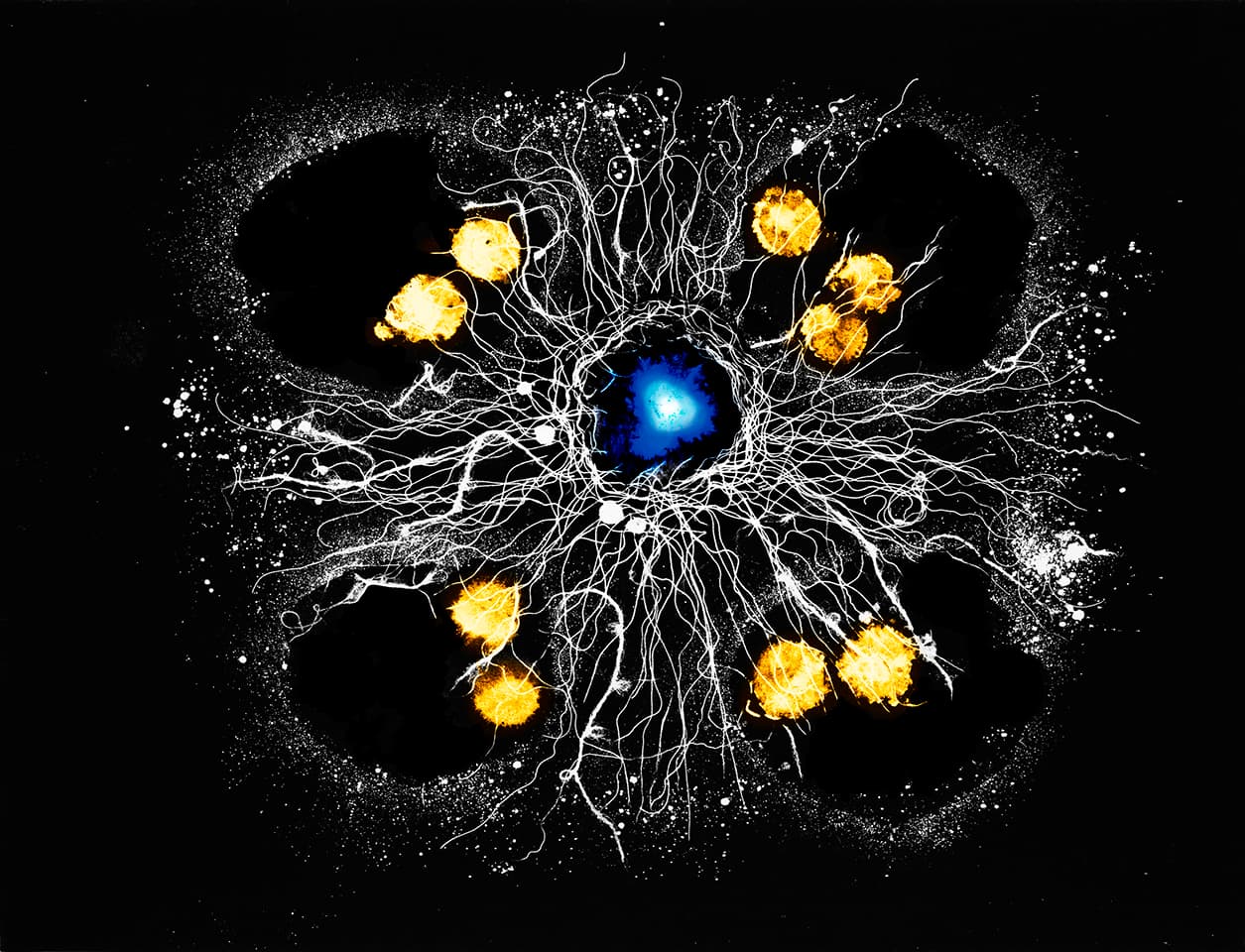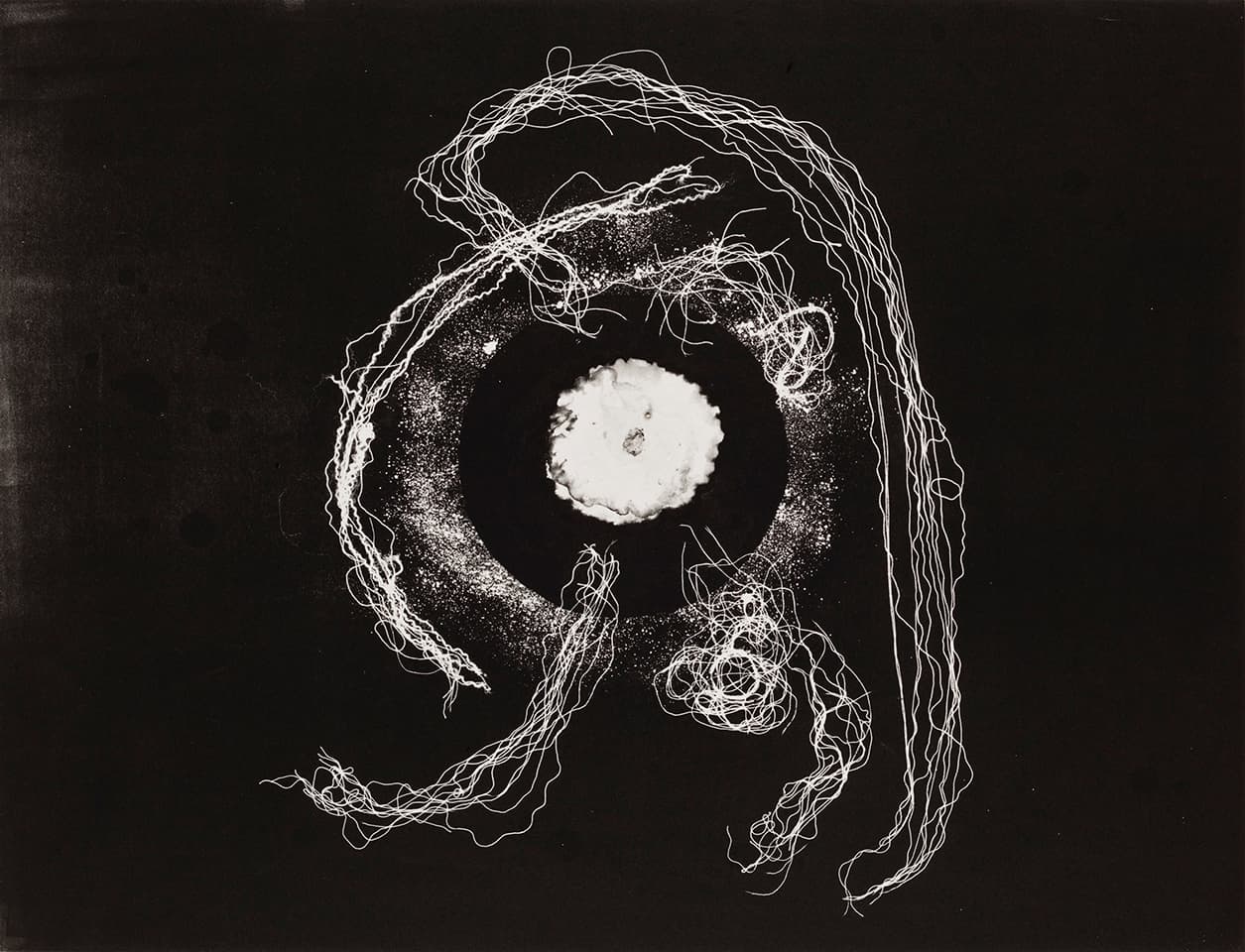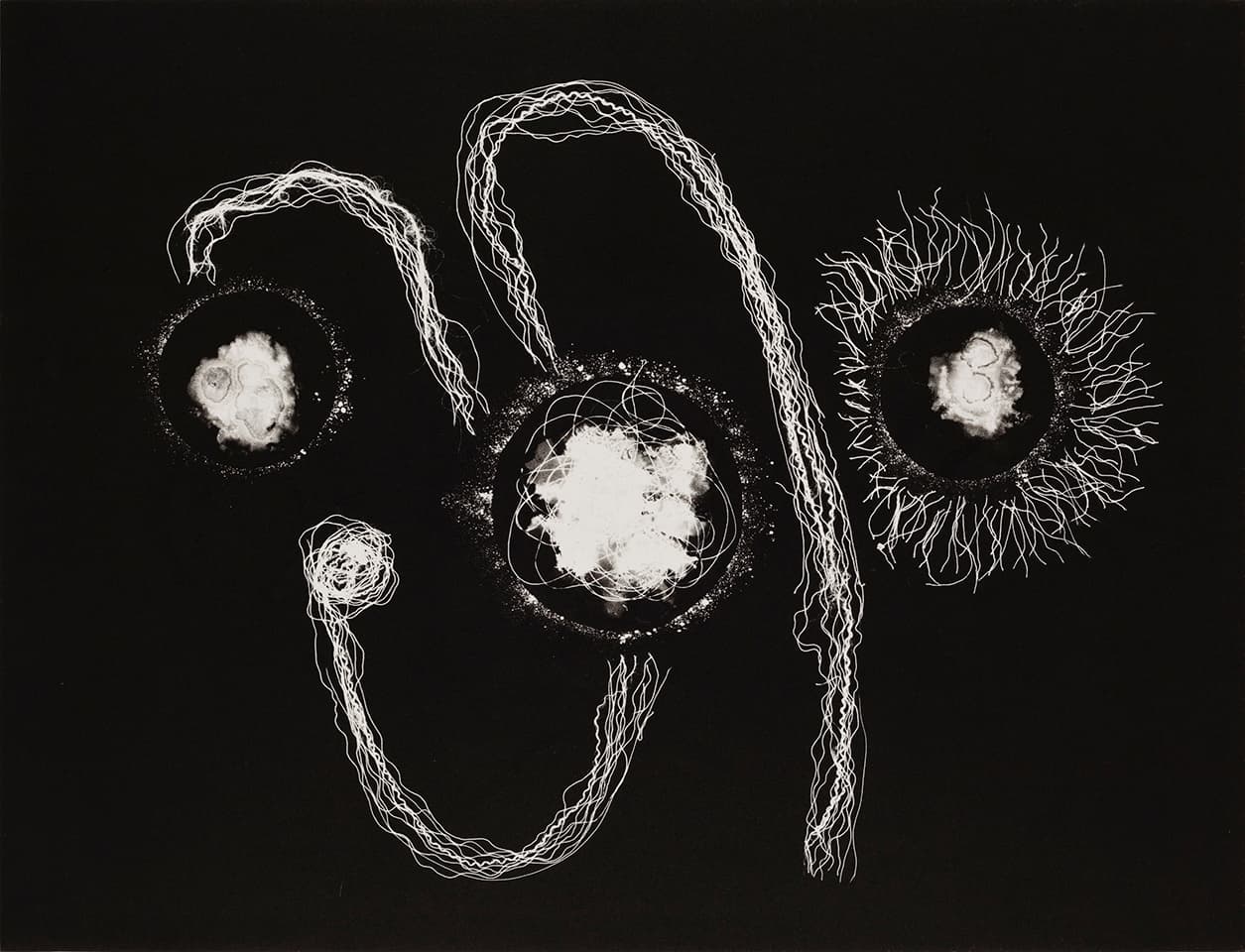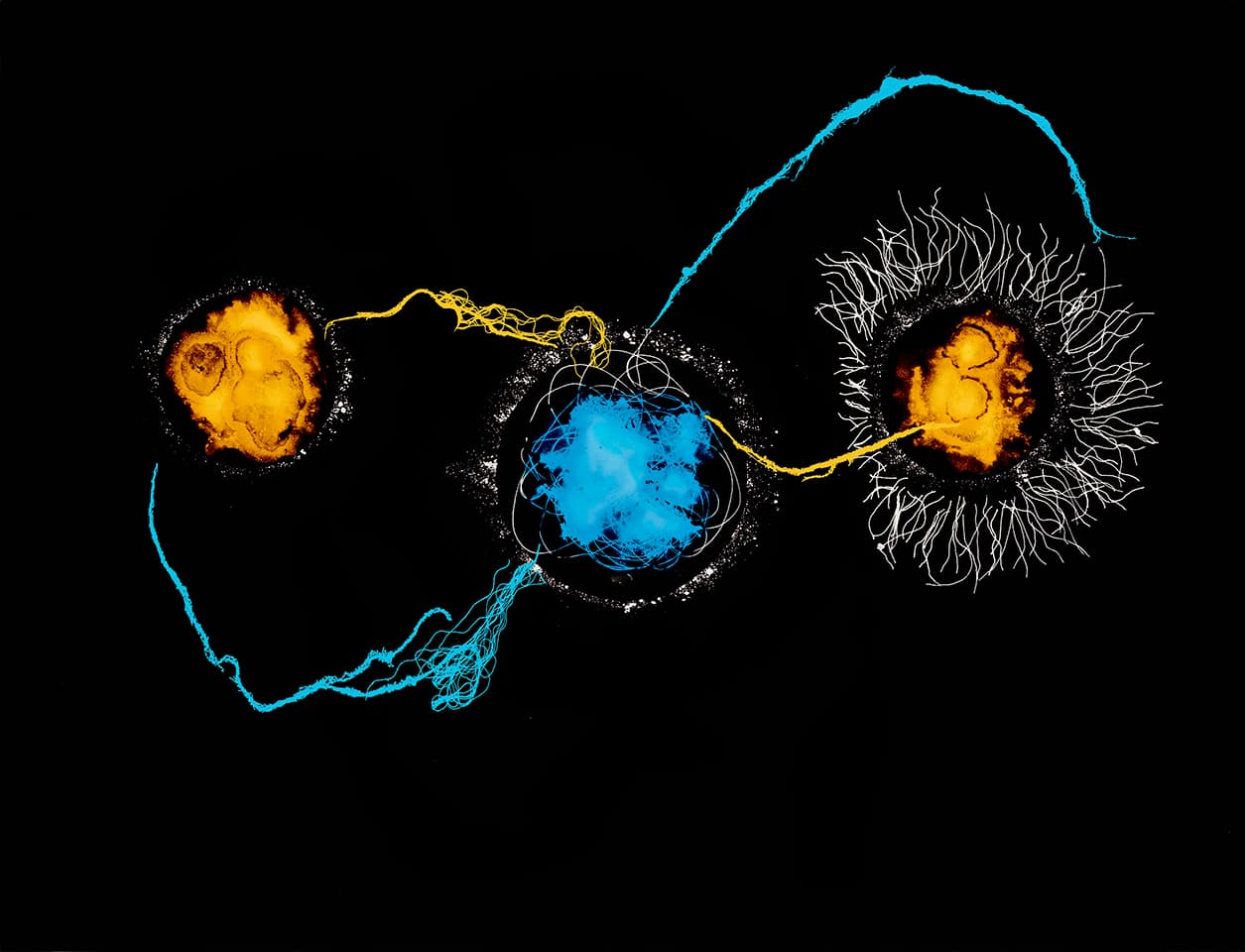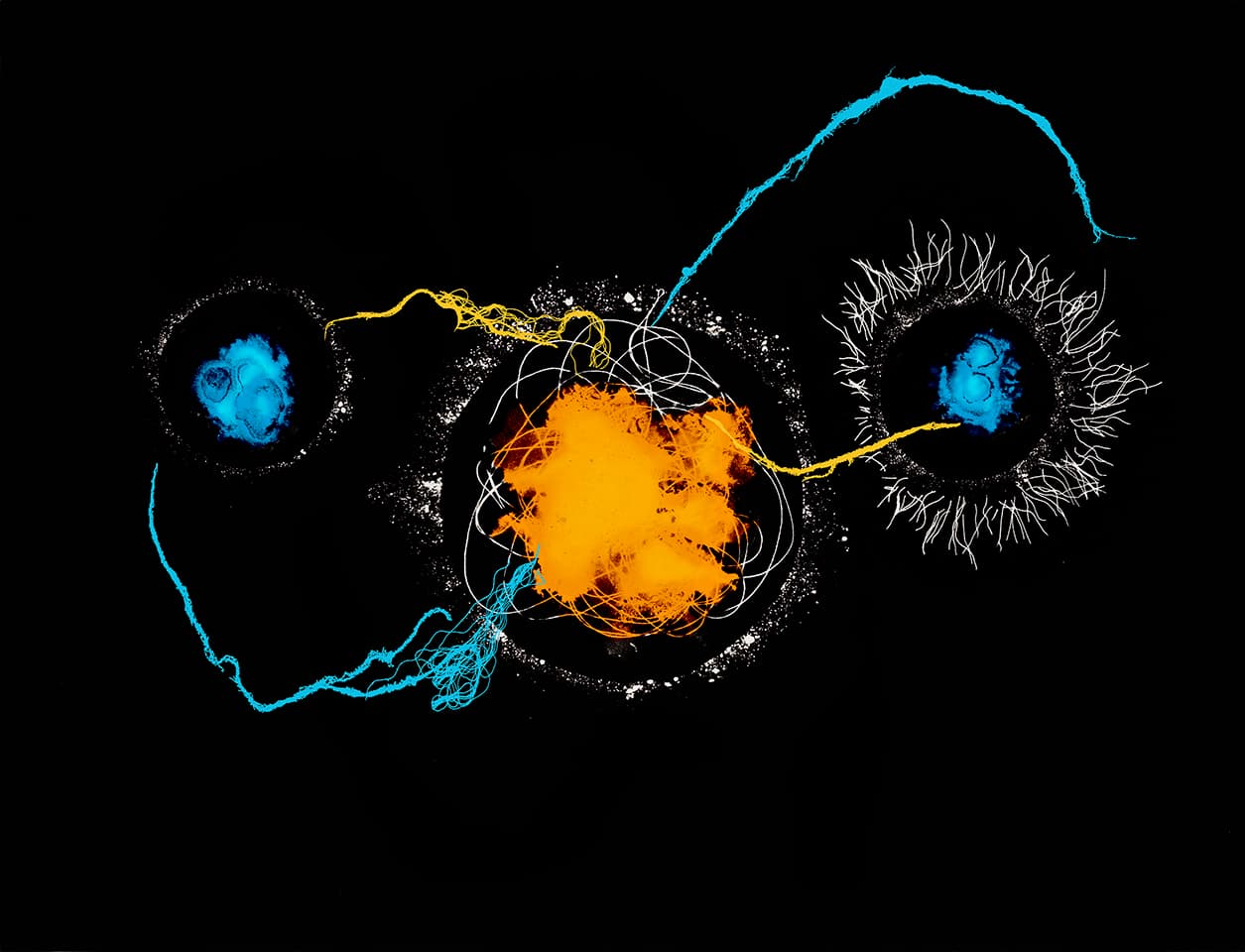Heart
Exploring the human body
When I was asked to make a series of artworks about the heart for the cardiovascular unit at the Royal Brompton and Harefield NHS Trust, I realised that the heart has many meanings and well-known visual representations. The heart’s function in the body is as a pump for the blood but it also has cultural significance as a potent symbol for earthly and religious love. There is the Cupid’s Heart of Love and the Sacred Heart of Christianity. There are the brilliant anatomical drawings of Leonardo da Vinci. Nowadays via scanning and photographic techniques you can watch a human heart pumping real time on a computer screen. The challenge was to make a series of artworks which would celebrate this incredible organ for a medical setting.
I decided not to use the romantic or sacred heart shape. Anatomical drawings seemed too literal for a hospital setting. What fascinated me was the heart as a pump- it pumps quietly and efficiently up to one billion times in a lifetime. I decided to make lenticulars. A lenticular is made from a number of registered layers of images which move and change as the viewer moves around them – as sort of static animation. It would be an interesting and abstract way to suggest a heartbeat and the pumping of the blood from the heart to the lungs. I settled on a simple circle to represent the heart and triangular shapes for the lungs. Firstly I made a series of initial drawn monotypes (Heartworks) on which to base the lenticulars (Heartbeats). I added strong colour to the final Heartbeats lenticular prints to suggest that the heart is where emotions are felt.
The heart pumps up to one billion times in a lifetime.
